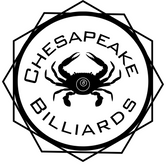Maintaining Your Pool Table
“Maintaining Your Pool Table”
The Cabinet - You have made an important investment that will provide you, your family and friends with years of pleasure. Taking care of your investment is important and requires very little time on your part. Wood finishes require periodical dusting. It is best to use a non-residue dusting agent, such as a lemon oil. Never use glass cleaner or any other ammonia type product. Avoid extremes in humidity. It may be necessary to use a humidifier or a dehumidifier to prevent wood from warping or cracking over time. Always use care to avoid spilling drinks or other liquids on the table. If a spill does occur, wipe it up as quickly as possible.
Cloth - Your table is covered with a high quality material. Proper brushing of the table directly affects the playing quality. Always begin brushing your table from the head (nameplate) end. Brush in straight strokes to the end of the table. Do not use a circular or scrubbing motion and always remember to brush the area under the cushion overhang. It is normal for some “pilling” to occur on the cloth during the first month. Please note that all materials, including your pool table cloth will wear. As early as the first game of pool you May notice spotting and streak marks from the balls and cues. This is a normal condition and should not alarm you. Average life expectancy on your cloth is 5 – 10 years. However, with poor maintenance or misuse the cloth could become damaged much sooner.
Tracking –Tracking is a fairly common occurrence and relates to the movement of the balls on your table. If you notice the balls drifting off as the motion of the ball slows down, you are probably experiencing tracking. This does not mean your table is not level. During tracking the ball can roll off in different directions. If the balls always roll to one side, then the table could be out of level.
Table covers- Your table should be covered whenever it is not in use. This helps keep your table free from dust and gives it protection against accidental damage and fading of the cloth color.
Damaged Cloth –The most common causes of damage to cloth are careless players. Be sure that no drinks are sat on the rails. If something should spill onto the table use towels to blot up as much of the liquid as possible as quickly as you can. A pool cue tip should always be properly shaped to ensure that the cloth isn't damaged when striking the cue ball low.
Leather Pockets – We recommend not using any product on your pockets as they can get on your balls then leaving marks on the cloth. It does not hurt your pockets to store the balls in them – actually it helps keep the leather supple!
Lighting – Proper lighting of the playing area is essential. Light should be sufficient to eliminate shadows on the playing surface. A general rule of thumb is the light should be hung so the bottom of the fixture is at eye level. Typically this is around 36”.
Billiard Balls – Periodically your billiard balls should be wiped with a soft, dry cloth to maintain their luster. If the balls appear dirty or dull looking, you may clean them with a good quality billiard ball cleaner or warm soapy water. Do not use a buffing wheel to polish the balls as this can result in out-of-round balls that will not roll true.
Cues – A properly shaped tip on you cue can help prolong the life of your cloth. The tip should be shaped and rounded into a shape similar to a nickel. An unshaped cue can cause you to miscue and nick the cloth.
Chalk –Pool players agree that using chalk is important. Properly used, it prevents miscues and aids in putting English on the ball. The chalk should be applied by holding it lightly against the cue tip and rotation a few half turns of the wrist. Then slant the chalk slightly so you can coat the edges of the cue tip. Do not grind the chalk and tip together.
Moving Your Table –Never try to move your table even a few inches by yourself! Call Chesapeake Billiards for professional help. Even an inch can cause a table to become off-level.

